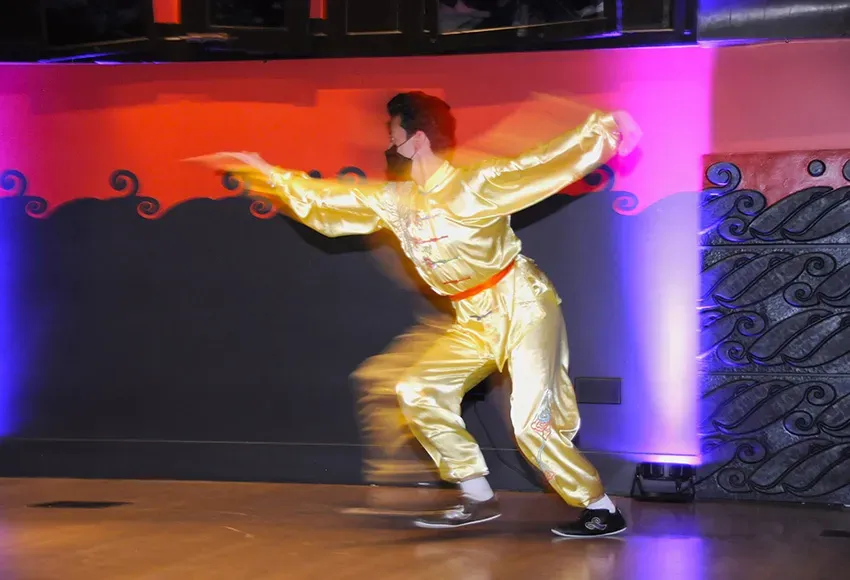As the sun set and the lights came on across the city, the Wing Luke Museum opened its doors for the house party of the season, "Multiversal Magic." Themed after the hit A24 film Everything Everywhere All at Once, the party incorporated the "sickest looks," including Elvis jumpsuits, googly eyes, and psychedelic drag.
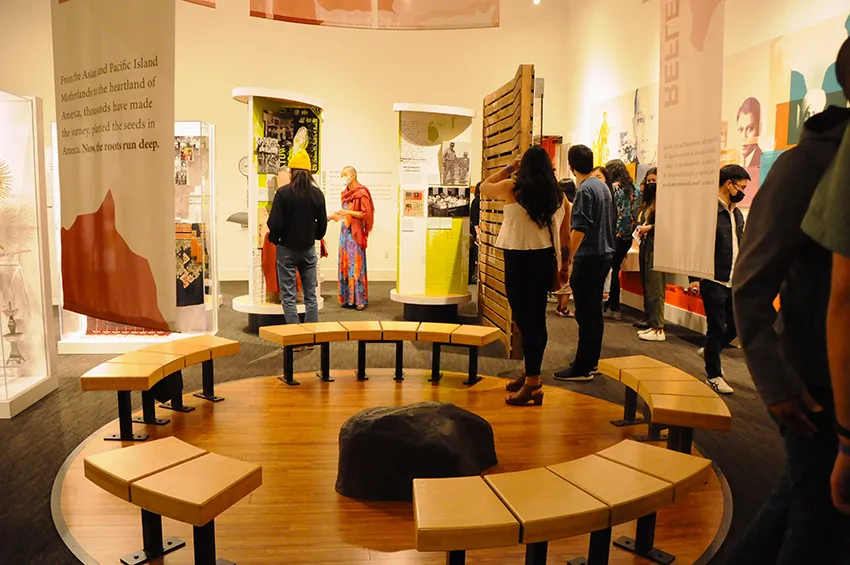
Much like the multiverse the event aimed to channel, there was something going on in just about every corner of the museum. Before the festivities had even begun, curators were welcoming guests and inviting them to explore the vast exhibits. Upstairs, patrons wandered through galleries showcasing the triumphs and adversities of different ethnic groups, such as the I Am Filipino room, the Vietnam in the Rearview Mirror room, the "Woven Together: Stories of Burma and Myanmar" exhibit, and a memorial to the Cambodian killing fields. Attendees were also able to enjoy the exhibit on beauty and beauty standards.
Farther along was a live and interactive mural, created by artist Nikita Ares. Her artwork came alive as the night went on, and offered a beautiful and modern contrast to the historic nature of the upper-level exhibits.
Also on the upper level of the museum was a special room for tarot reading. This exhibit, courtesy of artist and tarot reader Alexa Villanueva, proved to be one of the most highly sought-out experiences of the evening. A line for the fortune room stretched around the top floor and zigzagged into other rooms.
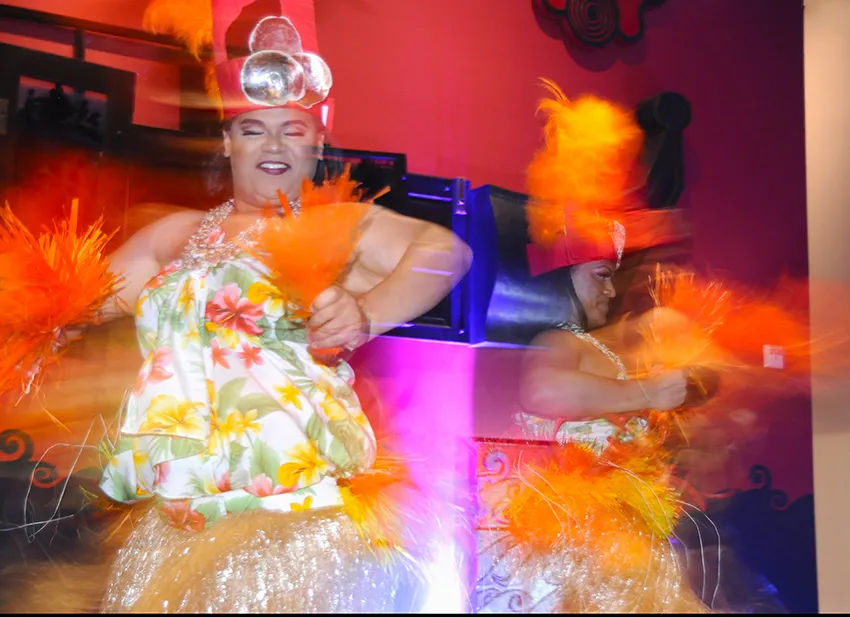
Hitting the dance floor
On the main floor of the museum, partygoers enjoyed active and loud performances, a bright dance floor, and many delicious catered foods. The emcee for the night, Mane Tuia'ana, knew how to keep the party going, but also when to call for quiet – as the attendees flooded into the dance floor, he called on everyone to take a moment to acknowledge the Duwamish tribe.
Tuia'ana kept the party going all night, introducing each new performer and DJ to the crowd. The first was DJ KBOOGIE. She immediately attracted some of the best-dressed participants to the dance floor with her EDM-inspired beats.
The party kept going even after she left the stage, as she was followed by the equally as impressive DJ Magic Sean, who shifted the vibe by introducing the room to some old-school hip-hop and R&B. The change in beats didn't deter dancers.
Aside from DJs, the party also included performances by local artists, such as Seiichi Nagai, a Seattle-based indie performer, and Viper Fengz, a dancer-storyteller extraordinaire. Traditional cultural performances were also incorporated into the night, with beautiful dances from the UTOPIA Washington Laulima cultural performance group.
Slam poetry
For those looking for a quiet reprieve, there were other fantastic activities set up across the museum. In the theater, local artists and writers came together for a slam poetry contest judged by audience members. Poems ranged across a myriad of styles and concepts, including nature, identity, loss, grief, and Bruce Lee.
One of the most noteworthy performances came from museum worker Nat, who read excerpts from her book. "It's really important to share the positive and the negative and to embrace all that," she said. "I'm always scared as hell to come up here, but so many people have told me my words have helped them heal. If there's a chance they could help someone else, that's just the most rewarding thing."
Beauty on display
Next door to the theater, a different type of beauty was on display, literally. The latest installment at the museum, an examination of different forms of AAPI beauty, hosted many surprises at each turn.
Every section of the exhibit included a form of interaction, whether it be naming a nail polish color or writing words of affirmation to put on the wall. The exhibit started with a room highlighting Asian American social media influencers and personalities, including the incredibly talented Seattle native Alexa Manila.
The next room examined hair and makeup throughout the ages, with a running video of Jenny "The Shanghai Pearl" Ku demonstrating the evolution of beauty. Ku also happened to be standing next to the exhibit, offering up googly eyes and sticky gems for anyone who wanted to add a little sparkle to their night, because, she explained, "in the [video], one of the main characters has really amazing, outrageous makeup." She also said she enjoyed the process of trying out different looks from the last hundred years. "I really liked the '40s. Actually, I think I liked all of them, but especially the '30s and '40s and the 2010s."
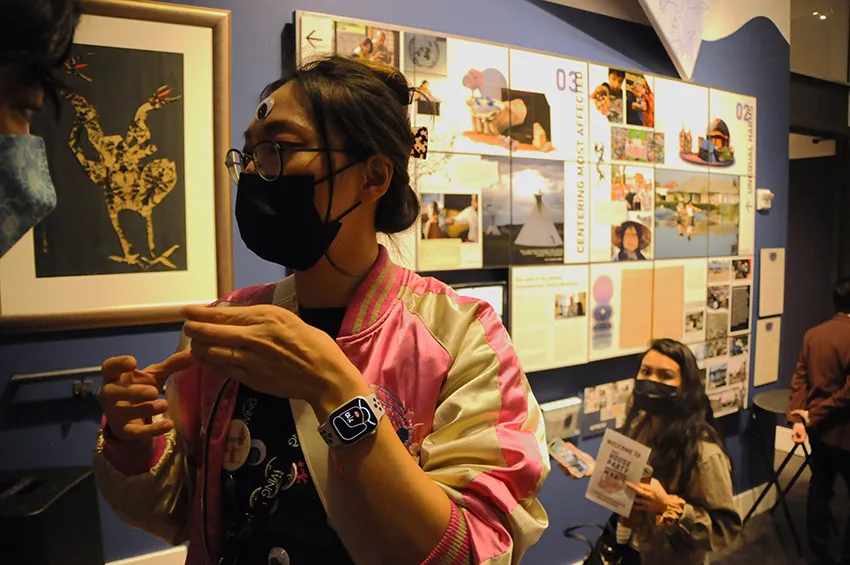
The next room focused on celebrities, with movie posters highlighting some of the most successful films to feature Asian representation, including Bend It Like Beckham, The Matrix, Crazy Rich Asians, and Moana. The room also asked patrons to name one of their favorite AAPI celebrities.
Following that, the exhibit highlighted the importance of nail art, and explained the rich history of Vietnamese nail salons and Asian immigration. Along with an interactive section that asked participants to rename popular nail polish colors, the exhibit also had an actual nail artist present to do manicures for partygoers.
The final section of the exhibit took a different approach. "It was curated by community advisory committees, that's how we make our exhibits," said the curator, Mikayla, who wanted to use just her first name. "I was the facilitator of that process, so we pulled together people with different connections to the topic of beauty... There were nail salon owners and actresses and a therapist, all ...with all these different angles on beauty.
"It took us about a year and a half to develop what we wanted to say and what we wanted in it, and it was really interesting. The very first day, the first meeting, we were like, 'Oh, beauty, this is going to be such a fun topic,' and we had people go around and say a time they felt beautiful, and everybody was crying by the time we got around the table. It turns out it's a very intense topic."
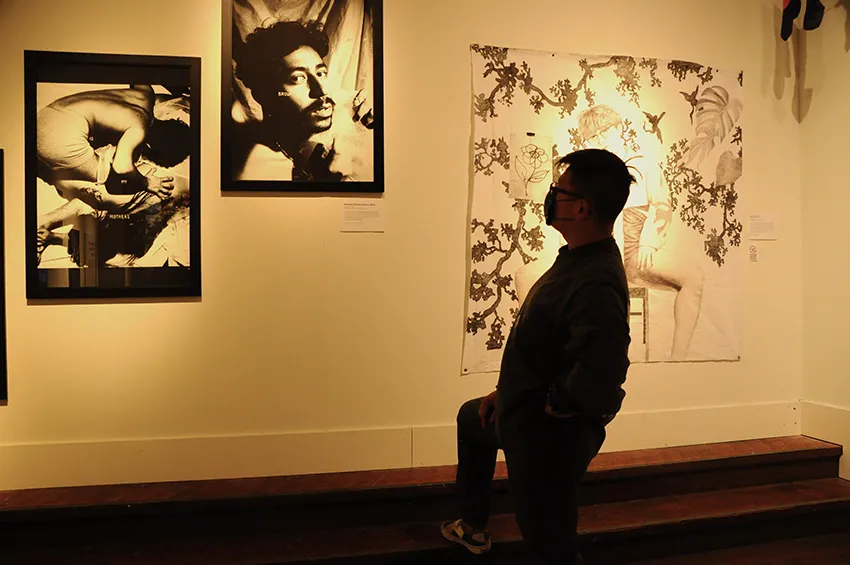
Addressing beauty standards
From body shaming to colorism to the dangerous practices of plastic surgery, the final room examined why the topic of beauty made everyone so emotional and asked attendees to question modern beauty standards and reexamine the trauma we all hold as a result of them.
"There's a lot about how beauty expresses yourself, but also a dark side, the business side of beauty and toxic nail salons and exploitative labor practices and all that," Mikayla explained. "And also that the beauty industry is designed to make you feel like you're not good enough. So this space is very specific, in that it's an area to deconstruct those messages and see what's behind them."
The space concluded with a faux fire of orange paper, the purpose of which was to toss away cruel comments or too-high standards. As participants left, they were guided to look in mirrors and see themselves as the final piece of art in the museum.
Mikayla explained this more fully: "Often, it can be someone like your mom who says those things to you, and that's super painful. So we have this space here where people can write down messages that are running in their heads from their childhoods or what someone yelled at [them] on the street..., and it's symbolically burned.
"Then we have this space for people to write positive messages to help take care of them[selves]. We wanted to give people a space to process all of that.
"And then as you go down the stairs, the final space is like, 'Now we're really ready to express ourselves, free of all that baggage' and understanding the colonial nature of beauty standards."
The party, from the performances to the artwork, to the costumes worn by attendees, was incredible. Each element of the night was intentional and a tribute to AAPI culture, beauty, and pain.


